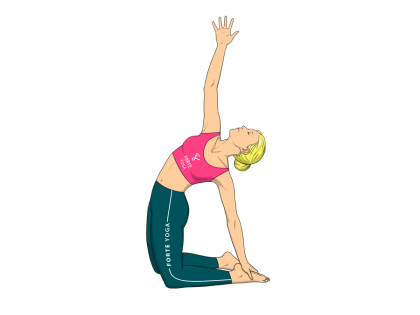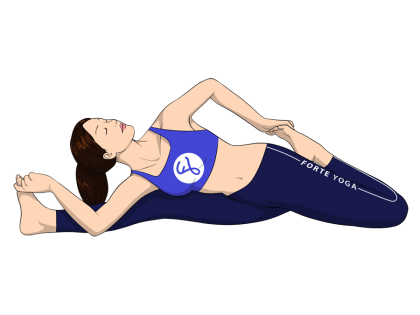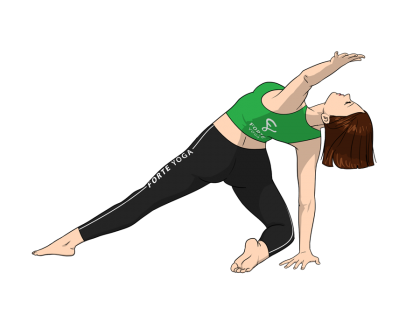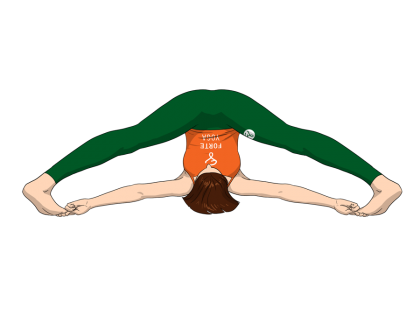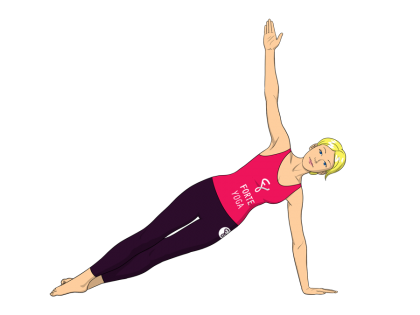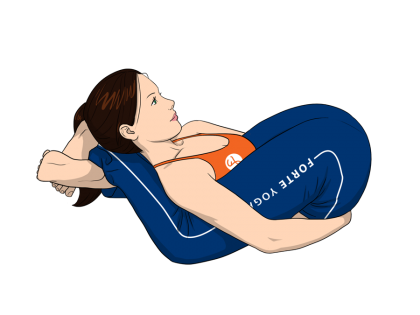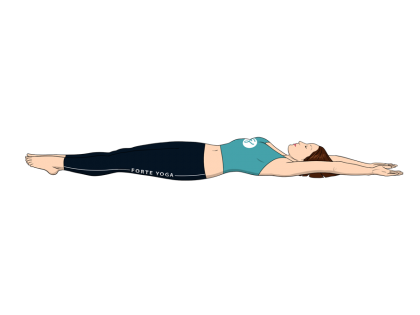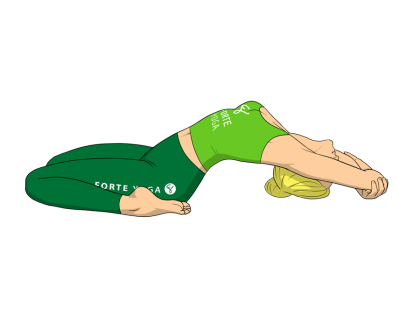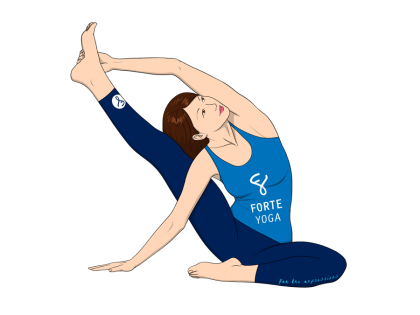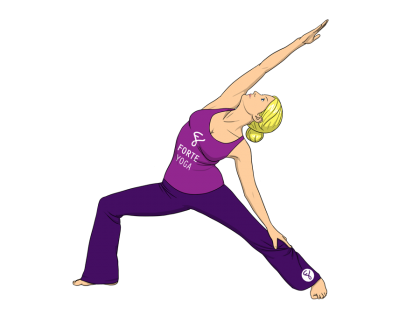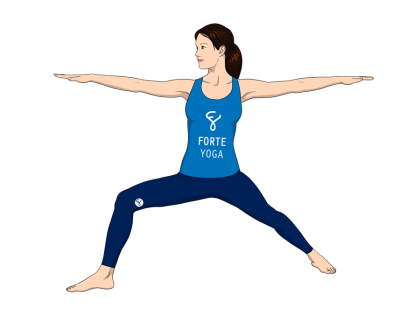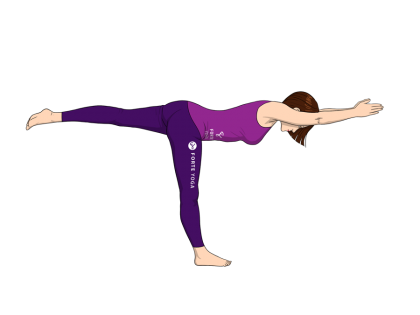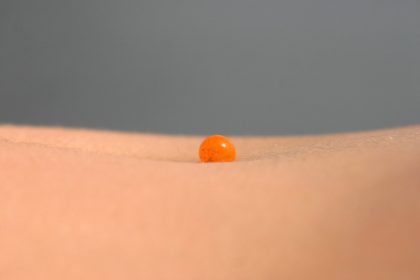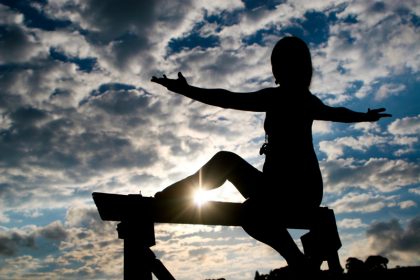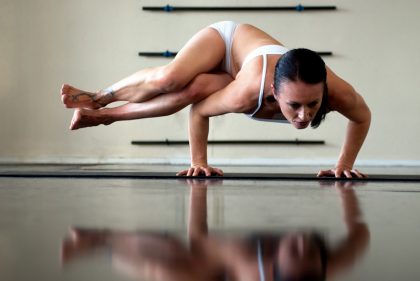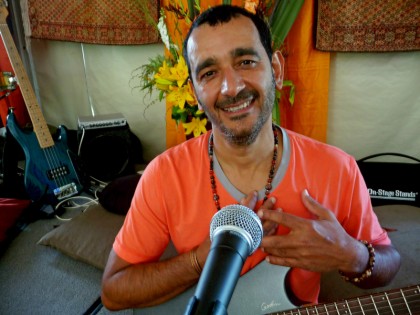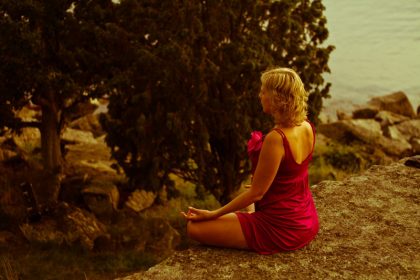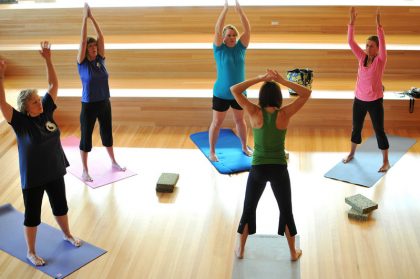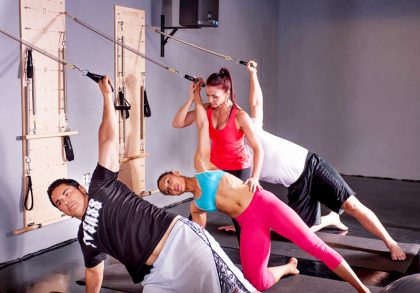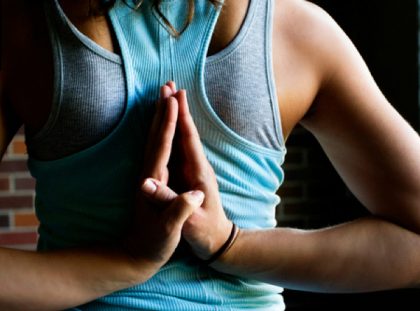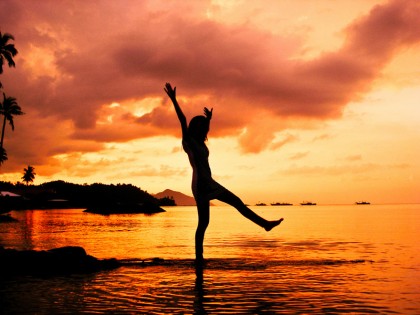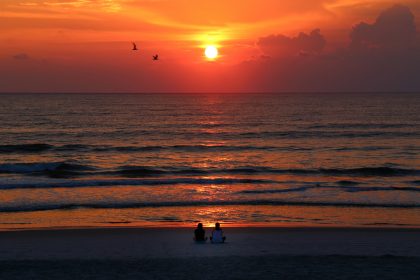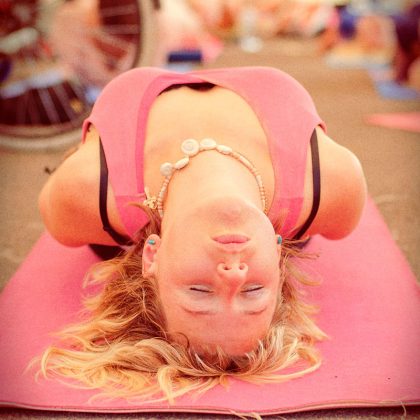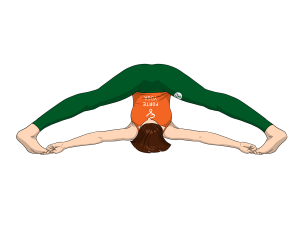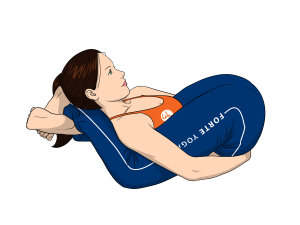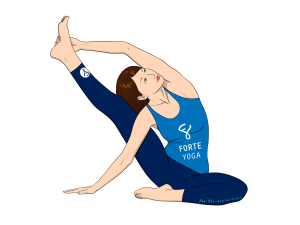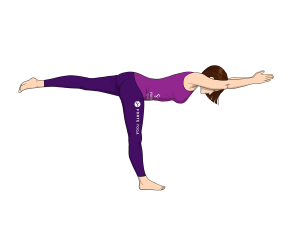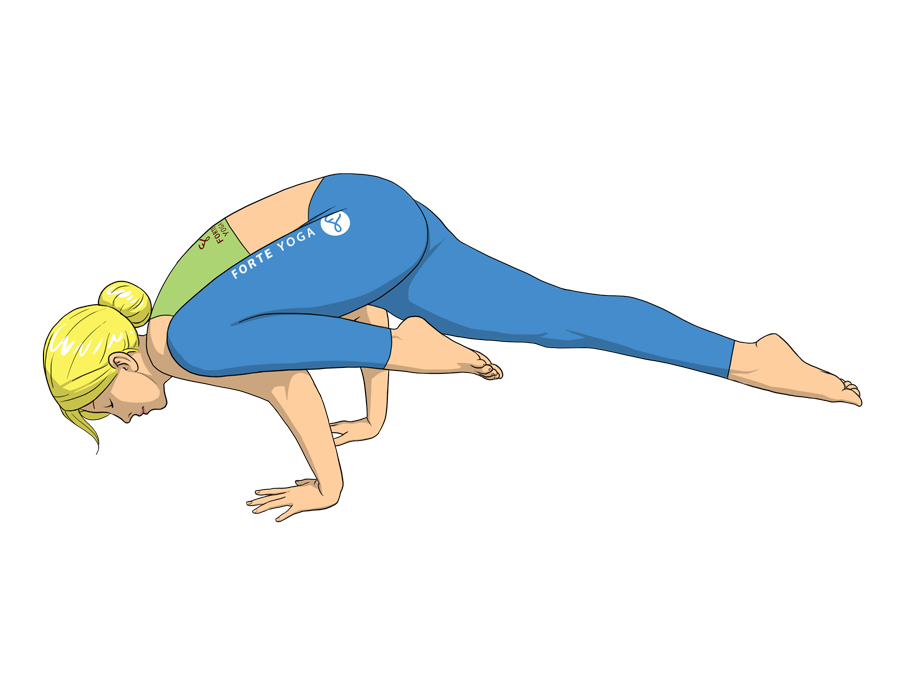
overview
One Leg Side Crane Yoga Pose is an arm balance pose that targets the hamstrings and is ideal for yogis and yoginis at an advanced level.
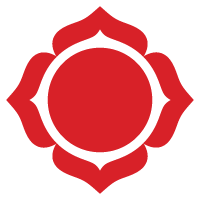 muladhara – the root chakra
muladhara – the root chakra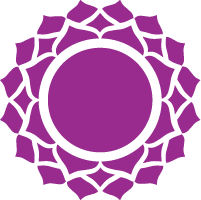 sahasrara – the crown chakra
sahasrara – the crown chakrarelated poses
[yoga-sharrre]
How To Do One Leg Side Crane Yoga Pose
- Start the position in Tree Pose (Vrksasana), left leg grounded and the right foot resting on your inner left thigh.
- Using your hands, lift your right foot and place your ankle above your left knee so that your foot is crossing in front of your leg. You can place your ankle just above the left knee, or higher up on your thigh.
- Exhale and begin to bend at the hips, holding your foot in place with the opposite hand. As you move your upper body forward, bend your left knee slightly to lower your body further. As your upper body moves in closer to your folded leg, bring your arms in front of you and firmly push the palms of your hands flat onto the floor, shoulder-width apart and arms extended.
- Balancing on your hands and the balls of your feet, continue to bend the left knee until your calf and hamstring are pressed together. At this point your right foot should be between the upper thigh of your bent leg and your armpit, sticking out past your left arm.
- Hook your right knee over your right arm so that the inside of your thigh is over your triceps. Your elbows should be bent, hands pressed on the floor, so that your upper arms are creating a shelf for your bent leg to rest on. Pull your right knee forward and angled slightly outward, drawing your right foot away from the upper left thigh. Extend your left leg behind you, keeping your foot on the floor to stabilize yourself.
- Raise your hips and transfer the majority of your weight to your hands, moving your body forward. Rock forward a few times, testing your balance when you transfer the weight so that you can safely begin to lift your leg. As you continue moving forward, bend your elbows, keeping your right leg firmly rested on your forearm. You will feel your left foot begin to lift itself off of the floor naturally; let the foot lift up, keeping your leg active, then extend it diagonally behind you angled inward so that your right foot and left leg are touching (or nearly touching) around the knee or inner thigh. Point the toes of both of your feet, or extend through the heel of your raised leg to deepen the stretch in the back of the leg.
- Hold this position for a few controlled breaths. To come out, bring the extended leg back in by bending at the knee, placing your foot back on the floor. Then shift your weight back onto your grounded foot, ending back in the tree pose. Release and start again with the other leg.
Notes
- Breathe deeply through each step.
- This is an advanced pose that requires the strength of the upper body and arms as well as the flexibility of the hips and knees.
- Do not attempt if you have back, arm, wrist or knee injury.
- Do not attempt if pregnant.
Tips
Like many arm balances, this pose can be frightening for people even if their bodies are fully capable of entering the position. Be sure to make yourself comfortable before entering the position as this fear can become dangerous and cause injury. If you’re afraid of falling forward onto your face, don’t rush into the position even if you’re flexible enough. Make sure you are used to the motions and place some blankets around you to break your fall (just in case!).
Stretches & Strengthens
All Muscles: Hamstrings, knees, lower back, arms, wrists
Target Muscles: Hamstrings
Health Benefits of One Leg Side Crane Yoga Pose
- Increases balance, stability and concentration.
- Develops arm and core strength.

